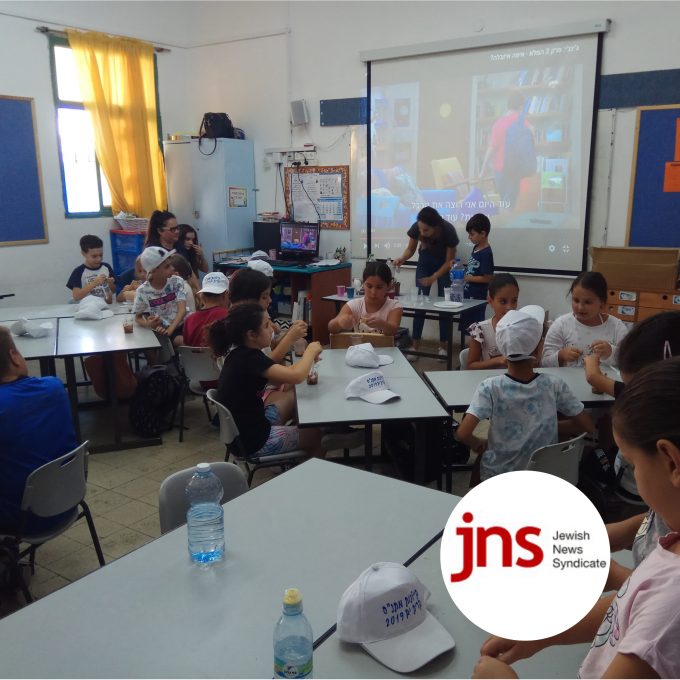From ants to sea urchins and coral reefs to cloud forest, the 28 teenagers on this year’s World ORT Ecology Summer School have trekked and splashed their way through an inspiring array of Panama’s stunning flora and fauna.
Their two-week adventure has come to an end but the impact of what they have experienced and learned will last a lifetime.
“Our aims were to inspire our students with a deep appreciation of the value of the natural world and the need for its conservation, to give them experience of working on independent scientific research projects in the field and to develop their skills of collaborative working and communication,” said the Head of World ORT’s Education Department, Daniel Tysman.
And thanks to the expert leadership of their guide, renowned ecologist Guido Berguido, and privileged access to scientists at the Smithsonian Tropical Research Institute, the world’s premier tropical biology research institute, the students from ORT schools in seven countries have returned home enthused and enlightened.
“This has been one of the best experiences in my life. I feel like I’ve made a family here. And I’ve been able to put into practice all my science lessons with my project on hummingbirds. It’s been really interesting to use the theory I’ve learned at school: in Mexico City we don’t have the opportunity to experience nature as we do in Panama,” said Jorge Becker, a student at Colegio Israelita de Mexico – ORT (CIM-ORT).
For the Summer School, Jorge and the other students from Argentina, Brazil, Chile, Mexico, Panama, Peru and Spain were based at the Soberania Field Station nestled in a 50,000-acre national park boasting an outstanding biodiversity – just in the grounds of the field station there are dozens of species of butterflies and moths, nearly 200 species of birds, as well as lizards and mammals such as sloths, tamarin monkeys, and kinkajous.
During the students’ initial explorations of the rainforest, Smithsonian botanist Rodolfo Flores, who has discovered more than 20 plants species new to science, stimulated their curiosity to observe the flora from new perspectives. Fellow Smithsonian, Panama’s leading jaguar specialist, Ricardo Moreno, told them about the existential challenges that the big cats face. An evening visit to the Smithsonian’s bat study laboratories introduced the students to the behaviour and variety of the flying mammals. And herpetologist Dr Abel Batista shared his knowledge of local amphibians and reptiles.
The students quickly grouped together to choose a research topic which they pursued for the duration of the summer school – from examining the responses of the Mimosa pudica to stimuli such as touch and temperature, to testing the reaction of Azteca ants to perceived threats to their host tree, the Cecropia, and assessing humming birds’ preferences for different concentrations of sugar water.
The enthusiasm with which the students conducted their research was a highlight of the summer school for Mr Berguido, whose achievements in protecting Panama’s biodiversity have been recognised by two newly discovered species being named after him.

Micaela and Valeria observing howler monkeys in the rainforest.
“Watching the students absorb all the experiences and eventually turn all that into the development of their particular group research projects; to see them develop their own ideas and hypotheses, collating the data and sharing their research, it was very enriching for us to see them flourish like that,” he said. “They took on their role as researchers and scientist and dedicated a lot of time to their projects, often late into the night. It was very gratifying.”
The students presented their research at the end of the summer school but the pressure of this deadline did not prevent them from seeing more of their host country. There were visits to the Smithsonian Institute’s marine research centres at Punta Culebra and Punta Galeta where they learned about the differences between Atlantic and Pacific fauna and toured a mangrove forest.
The students ascended 1,000 metres through the Altos de Campana National Park pausing only to examine the flora, including mosses, bromeliads, tree ferns, and orchids. And, once in the cloud forest at the top, they were able to compare what they found with the rainforest they had explored days earlier at Soberania.
Mr Berguido said the Summer School was deliberately challenging.
“They were doing college-level work so we were demanding a lot from them. But they’re very sharp with a lot of potential: we wanted to cultivate that and develop their skills and interests,” he said.
And exposing the students to a variety of experts from the Smithsonian Institute and a range of research fields would, he hoped, inspire some of them to one day choose scientific research as a career.
But, added World ORT’s Daniel Tysman, the Summer School was also an expression of how the organisation’s international network could bring the students and schools of ORT closer together.
“We’re sure that this is the ‘end of the beginning’ of a new chapter of close partnerships between our schools, working towards goals that are greater than any of us can achieve individually,” he said.






